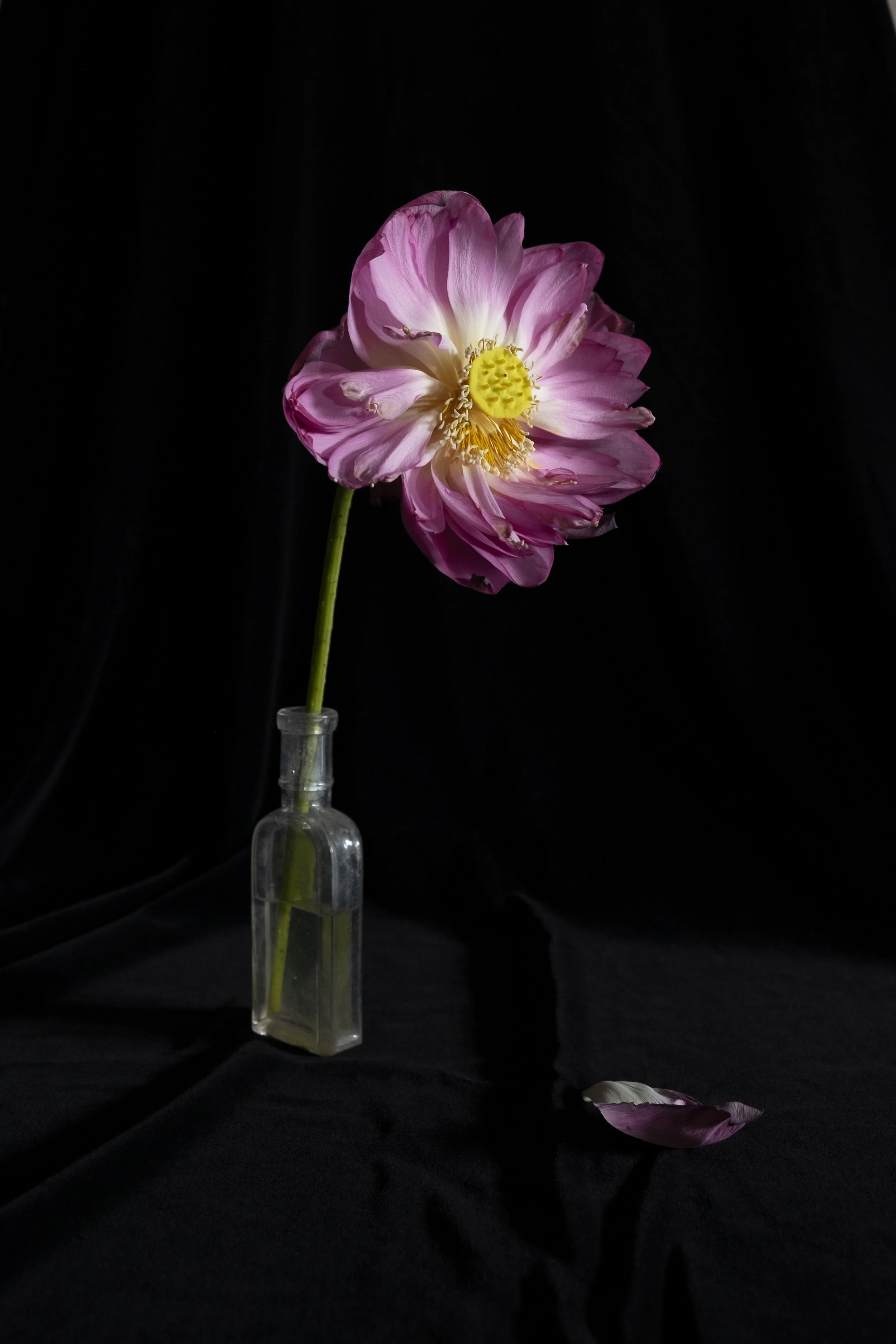The Gardener's Friend — On Nelumbo nucifera
You are a recipient of Coucou Postale, a postcard series designed to engage and delight readers through stories and art using good old fashioned mail and the magic of the Internet.
Nelumbo nucifera — Hanoi, Vietnam 2018
Before Monet’s ethereal waterlilies there was the divine imagery of lotus flowers — or so I learned in an Asian art survey class that rounded out my art history degree. To appreciate the veneration of the lotus flowers requires a trip to Asia, particularly China, India, or Vietnam or maybe it just requires my homage to them.
I will always remember the day my husband brought home a bouquet of lotus blossoms. It was my first summer in Vietnam, and for a moment, I had forgotten about the debilitating humidity that turned me into a recluse but made possible the exquisite pink blooms that I held in my hand. Unwrapped, they were more rugged than I imagined they would as I trimmed and prepped them for the largest vase I owned. When I was satisfied with my arrangement, I placed them in the center of my dining room. They seemed so out of place, but why?
Until then, the only time I’d ever encountered a water lily was from afar. The real magic of Monet’s waterlily paintings was that they created an intimacy with a flower that was ordinarily kept at arm’s length. Lotuses, unlike roses that grow along a fence, can’t be sniffed so easily. Part of the delight of encountering a bloom has to do with not only laying eyes on it but also the experience of touching and smelling it.
Lotus, as everyone well knows, grows in the middle of the water. The people in Vietnam who harvest the flowers are waist — and sometimes neck-high — in the muck, collecting the flowers they retrieve in baskets high above their heads. One day, the lake or pond where they grow may be a pink scene of blossoms, the next day bare, denuded of the lilies. We have these low-paid workers to thank for bringing us into the presence of beauty. How many times to we stop to thank the people who transform our homes into inner gardens?
Beauty isn’t something I usually just observe. Roses or lotuses, whatever the bloom, trapped on my tabletop, they are at the mercy of my sniffing and prodding. So enraptured by the blossoms, I spent hours drawing them at every stage of their unfurling.
Did they smell good? Yes! They perfumed our home with what I realized was a smell I knew quite well as their intoxication made me swim with thoughts of the early days of summer. It was a sweet and heady, aquatic scent that made the growing stench of a stagnant summer bearable. In other words, they were transcendent.
It’s this imagery that perhaps loaned the flower to the divine world. In Indian religion, the flower is intimately tied with Jainism, but more widely appreciated for its connection to Hinduism, where gods and goddesses alike sit on thrones of lotus, which are a symbol of divine perfection.
In Buddhism, lotus blossoms are held in similar regard. When Gautama Buddha took his first steps after enlightenment, lotus flowers appeared where he stepped — noticeably not in the water, which is their natural habitat, but everywhere. The lotus, his steps suggest, is what we aspire to as we emerge from the muck of living. The Vietnamese Buddhist monk, Thich Nhat Hahn, puts it more simply: “No mud, no lotus.”
Sitting on my dining room table, my flowers — which in our hothouse apartment bloomed faster than I could draw them — invited me to reflect. How could I refuse their invitation?
Up close, these flowers with their alien, yellow stamen, pink petals, and thick, prickly stems, connected me to a past where there was no sequins or flashing lights. It was flowers like these that asked people to stop, to breathe, to look within. —GF

